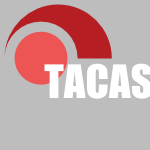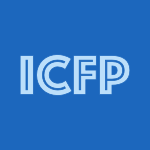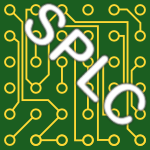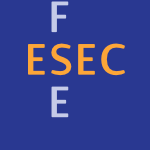68 papers:
 CASE-2015-ChengTLCH #algorithm #modelling #network #optimisation
CASE-2015-ChengTLCH #algorithm #modelling #network #optimisation- Modeling and optimizing tensile strength and yield point on steel bar by artificial neural network with evolutionary algorithm (CKC, JTT, TTL, JHC, KSH), pp. 1562–1563.
 CHI-2015-SongCOKH #effectiveness #on the
CHI-2015-SongCOKH #effectiveness #on the- On the Effectiveness of Pattern Lock Strength Meters: Measuring the Strength of Real World Pattern Locks (YS, GC, SO, HK, JHH), pp. 2343–2352.
 CSCW-2015-WieseMHZ #quote
CSCW-2015-WieseMHZ #quote- “You Never Call, You Never Write”: Call and SMS Logs Do Not Always Indicate Tie Strength (JW, JKM, JIH, JZ), pp. 765–774.
 HIMI-IKD-2015-HilanoY
HIMI-IKD-2015-HilanoY- Increase and Decrease of Optical Illusion Strength By Vibration (TH, KY), pp. 366–373.
 RecSys-2015-NovA #recommendation #social #symmetry
RecSys-2015-NovA #recommendation #social #symmetry- Asymmetric Recommendations: The Interacting Effects of Social Ratings? Direction and Strength on Users’ Ratings (ON, OA), pp. 249–252.
 CHI-2014-BurkeK #facebook #network #social
CHI-2014-BurkeK #facebook #network #social- Growing closer on facebook: changes in tie strength through social network site use (MB, REK), pp. 4187–4196.
 CSCW-2014-KimCB #collaboration #named
CSCW-2014-KimCB #collaboration #named- Ensemble: exploring complementary strengths of leaders and crowds in creative collaboration (JK, JC, MSB), pp. 745–755.
 HIMI-DE-2014-KoltzRRVMSB #feedback
HIMI-DE-2014-KoltzRRVMSB #feedback- Effects of Type and Strength of Force Feedback on the Path of Movement in a Target Selection Task (MTK, RCR, JR, KPLV, PM, TZS, VB), pp. 217–225.
 CIKM-2014-NtoutsiSRK #clustering #difference #quote #recommendation
CIKM-2014-NtoutsiSRK #clustering #difference #quote #recommendation- “Strength Lies in Differences”: Diversifying Friends for Recommendations through Subspace Clustering (EN, KS, KR, HPK), pp. 729–738.
 SAC-2014-RanaKS #algorithm #evaluation #ranking #social
SAC-2014-RanaKS #algorithm #evaluation #ranking #social- The strength of social strength: an evaluation study of algorithmic versus user-defined ranking (JR, JK, KS), pp. 658–659.
 ICSE-2014-QiMLDW #automation #program repair #random
ICSE-2014-QiMLDW #automation #program repair #random- The strength of random search on automated program repair (YQ, XM, YL, ZD, CW), pp. 254–265.
 SIGMOD-2013-PhamSL #named #social
SIGMOD-2013-PhamSL #named #social- EBM: an entropy-based model to infer social strength from spatiotemporal data (HP, CS, YL), pp. 265–276.
 TACAS-2013-RenaultDKP #automaton #composition #model checking #performance
TACAS-2013-RenaultDKP #automaton #composition #model checking #performance- Strength-Based Decomposition of the Property Büchi Automaton for Faster Model Checking (ER, ADL, FK, DP), pp. 580–593.
 CIKM-2013-McGeeCC #predict #social #social media
CIKM-2013-McGeeCC #predict #social #social media- Location prediction in social media based on tie strength (JM, JC, ZC), pp. 459–468.
 SEKE-2013-Al-JamimiA #design pattern #detection #prolog #using
SEKE-2013-Al-JamimiA #design pattern #detection #prolog #using- Using Prolog Rules to Detect Software Design Patterns: Strengths and Weaknesses (S) (HAAJ, MAA), pp. 727–730.
 ESEC-FSE-2013-EscoffierLR #component #framework #javascript #named
ESEC-FSE-2013-EscoffierLR #component #framework #javascript #named- h-ubu: an industrial-strength service-oriented component framework for JavaScript applications (CE, PL, NR), pp. 699–702.
 ESEC-FSE-2013-PetkeYCH #combinator #detection #fault #interactive #performance #testing
ESEC-FSE-2013-PetkeYCH #combinator #detection #fault #interactive #performance #testing- Efficiency and early fault detection with lower and higher strength combinatorial interaction testing (JP, SY, MBC, MH), pp. 26–36.
 VLDB-2012-SunAH #clustering #network
VLDB-2012-SunAH #clustering #network- Relation Strength-Aware Clustering of Heterogeneous Information Networks with Incomplete Attributes (YS, CCA, JH), pp. 394–405.
 CHI-2012-KehrHLD #self
CHI-2012-KehrHLD #self- A transformational product to improve self-control strength: the chocolate machine (FK, MH, ML, SD), pp. 689–694.
 CSCW-2012-Gilbert12a #predict
CSCW-2012-Gilbert12a #predict- Predicting tie strength in a new medium (EG), pp. 1047–1056.
 CSCW-2012-PanovichMK #network #social
CSCW-2012-PanovichMK #network #social- Tie strength in question & answer on social network sites (KP, RM, DRK), pp. 1057–1066.
 KDD-2012-Lin #case study #data mining #experience #machine learning #mining
KDD-2012-Lin #case study #data mining #experience #machine learning #mining- Experiences and lessons in developing industry-strength machine learning and data mining software (CJL), p. 1176.
 SEKE-2012-MeloSS #effectiveness #evaluation #parallel #source code #testing #thread
SEKE-2012-MeloSS #effectiveness #evaluation #parallel #source code #testing #thread- Structural Testing for Multithreaded Programs: An Experimental Evaluation of the Cost, Strength and Effectiveness (SMM, SdRSdS, PSLdS), pp. 476–479.
 POPL-2012-Moore #proving #theorem proving
POPL-2012-Moore #proving #theorem proving- Meta-level features in an industrial-strength theorem prover (JSM), pp. 425–426.
 CAV-2012-RolliniSS #model checking
CAV-2012-RolliniSS #model checking- Leveraging Interpolant Strength in Model Checking (SFR, OS, NS), pp. 193–209.
 SAT-2012-Weissenbacher #revisited
SAT-2012-Weissenbacher #revisited- Interpolant Strength Revisited (GW), pp. 312–326.
 CIKM-2011-McGeeCC #social #social media
CIKM-2011-McGeeCC #social #social media- A geographic study of tie strength in social media (JM, JC, ZC), pp. 2333–2336.
 KDIR-2011-ConroyGO #similarity #twitter
KDIR-2011-ConroyGO #similarity #twitter- Measuring Twitter user Similarity as a Function of Strength of Ties (JC, JG, CO), pp. 262–270.
 CAV-2010-BraytonM #named #verification
CAV-2010-BraytonM #named #verification- ABC: An Academic Industrial-Strength Verification Tool (RKB, AM), pp. 24–40.
 VMCAI-2010-DSilvaKPW
VMCAI-2010-DSilvaKPW- Interpolant Strength (VD, DK, MP, GW), pp. 129–145.
 ICFP-2009-CuoqSBBCCMPP #case study #experience #framework #ml #static analysis
ICFP-2009-CuoqSBBCCMPP #case study #experience #framework #ml #static analysis- Experience report: OCaml for an industrial-strength static analysis framework (PC, JS, PB, RB, GC, LC, BM, VP, AP), pp. 281–286.
 CHI-2009-GilbertK #predict #social #social media
CHI-2009-GilbertK #predict #social #social media- Predicting tie strength with social media (EG, KK), pp. 211–220.
 DHM-2009-LoudonM #design #representation #towards #visual notation
DHM-2009-LoudonM #design #representation #towards #visual notation- Towards a Visual Representation of the Effects of Reduced Muscle Strength in Older Adults: New Insights and Applications for Design and Healthcare (DL, ASM), pp. 540–549.
 SAC-2009-ChoiKHK #component #dependence #metric
SAC-2009-ChoiKHK #component #dependence #metric- Component-based metrics applying the strength of dependency between classes (MC, IJK, JH, JYK), pp. 530–536.
 CSMR-2008-Oliveto #information retrieval #traceability
CSMR-2008-Oliveto #information retrieval #traceability- Traceability Management meets Information Retrieval Methods “Strengths and Limitations” (RO), pp. 302–305.
 SAS-2008-KiddLR #reduction
SAS-2008-KiddLR #reduction- Language Strength Reduction (NK, AL, TWR), pp. 283–298.
 ICALP-C-2008-HochS #on the
ICALP-C-2008-HochS #on the- On the Strength of the Concatenated Hash Combiner When All the Hash Functions Are Weak (JJH, AS), pp. 616–630.
 KR-2008-MartinezGS #framework
KR-2008-MartinezGS #framework- An Abstract Argumentation Framework with Varied-Strength Attacks (DCM, AJG, GRS), pp. 135–144.
 ICDAR-2007-SrinivasanKHS #on the #verification
ICDAR-2007-SrinivasanKHS #on the #verification- On Computing Strength of Evidence for Writer Verification (HS, SK, CH, SNS), pp. 844–848.
 DHM-2007-LiZ #framework #modelling #simulation
DHM-2007-LiZ #framework #modelling #simulation- The Strength Factor in Digital Human Modeling and Simulation: A Case for a New Framework (KL, XZ), pp. 144–146.
 DATE-2006-McConaghyG #canonical #modelling #performance
DATE-2006-McConaghyG #canonical #modelling #performance- Double-strength CAFFEINE: fast template-free symbolic modeling of analog circuits via implicit canonical form functions and explicit introns (TM, GGEG), pp. 269–274.
 EDOC-2006-ErnstLSW #architecture #enterprise #tool support
EDOC-2006-ErnstLSW #architecture #enterprise #tool support- Tool Support for Enterprise Architecture Management — Strengths and Weaknesses (AME, JL, CMS, AW), pp. 13–22.
 KR-2006-LukasiewiczS #logic
KR-2006-LukasiewiczS #logic- Variable-Strength Conditional Preferences for Matchmaking in Description Logics (TL, JS), pp. 164–174.
 CAV-2006-Das #specification
CAV-2006-Das #specification- Formal Specifications on Industrial-Strength Code-From Myth to Reality (MD), p. 1.
 CAV-2006-PaulaH #flexibility #framework #named #simulation
CAV-2006-PaulaH #flexibility #framework #named #simulation- EverLost: A Flexible Platform for Industrial-Strength Abstraction-Guided Simulation (FMdP, AJH), pp. 282–285.
 IJCAR-2006-Werner #on the
IJCAR-2006-Werner #on the- On the Strength of Proof-Irrelevant Type Theories (BW), pp. 604–618.
 SIGIR-2005-CanoKW #music #recommendation
SIGIR-2005-CanoKW #music #recommendation- An industrial-strength content-based music recommendation system (PC, MK, NW), p. 673.
 ICPR-v1-2004-ShanGCCY #bibliography #recognition #robust
ICPR-v1-2004-ShanGCCY #bibliography #recognition #robust- Review the Strength of Gabor Features for Face Recognition from the Angle of Its Robustness to Mis-Alignment (SS, WG, YC, BC, PY), pp. 338–341.
 SPLC-2004-KleinHW #product line
SPLC-2004-KleinHW #product line- Industrial-Strength Software Product Line Engineering (JK, DH, DMW), p. 311.
 LICS-2004-CookT
LICS-2004-CookT- The Strength of Replacement in Weak Arithmetic (SAC, NT), pp. 256–264.
 ICSE-2003-KleinPW #product line
ICSE-2003-KleinPW #product line- Industrial-Strength Software Product-Line Engineering (JK, BP, DMW), pp. 751–752.
 DAC-2002-GanaiAGZM #algorithm #satisfiability
DAC-2002-GanaiAGZM #algorithm #satisfiability- Combining strengths of circuit-based and CNF-based algorithms for a high-performance SAT solver (MKG, PA, AG, LZ, SM), pp. 747–750.
 ASIA-PEPM-2002-Gluck
ASIA-PEPM-2002-Gluck- Jones optimality, binding-time improvements, and the strength of program specializers (RG), pp. 9–19.
 SIGAda-2002-AmeyC #exception #industrial
SIGAda-2002-AmeyC #exception #industrial- Industrial strength exception freedom (PA, RC), pp. 1–9.
 POPL-2002-Hofmann
POPL-2002-Hofmann- The strength of non-size increasing computation (MH0), pp. 260–269.
 ICSE-2002-GehrkeGNNTWZ #industrial #re-engineering
ICSE-2002-GehrkeGNNTWZ #industrial #re-engineering- Reporting about industrial strength software engineering courses for undergraduates (MG, HG, UN, JN, MT, JPW, AZ), pp. 395–405.
 ICEIS-2000-Theaker #case study #industrial
ICEIS-2000-Theaker #case study #industrial- Case Study: “Industry Strength” — It’s True Meaning for High-Tech SMEs (CJT), p. XLVI.
 ICML-2000-DeJong #empirical #learning
ICML-2000-DeJong #empirical #learning- Hidden Strengths and Limitations: An Empirical Investigation of Reinforcement Learning (GD), pp. 215–222.
 SAC-2000-Caraca-ValenteLM #modelling
SAC-2000-Caraca-ValenteLM #modelling- Functions, Rules and Models: Three Complementary Techniques for Analyzing Strength Data (JPCV, ILC, CM), pp. 60–64.
 FM-v1-1999-PaigeO #formal method
FM-v1-1999-PaigeO #formal method- Developing BON as an Industrial-Strength Formal Method (RFP, JSO), pp. 834–853.
 CSEET-1998-Diaz-HerreraP
CSEET-1998-Diaz-HerreraP- Educating Industrial-strength Software Engineers (JLDH, GMP), pp. 139–150.
 CC-1998-KennedyCDLLS #reduction
CC-1998-KennedyCDLLS #reduction- Strength Reduction via SSAPRE (RK, FCC, PD, SML, RL, MS), pp. 144–158.
 SEKE-1996-Hurley #identification #requirements #specification
SEKE-1996-Hurley #identification #requirements #specification- Identifying Language Requirements for Specifying Industrial-Strength Software Agents (WDH), pp. 238–245.
 HT-1991-MalcolmPS #enterprise #hypermedia #industrial #requirements #scalability
HT-1991-MalcolmPS #enterprise #hypermedia #industrial #requirements #scalability- Industrial Strength Hypermedia: Requirements for a Large Engineering Enterprise (KCM, SEP, DS), pp. 13–24.
 LICS-1988-SalvesenS #set #type system
LICS-1988-SalvesenS #set #type system- The Strength of the Subset Type in Martin-Löf’s Type Theory (AS, JMS), pp. 384–391.
 ESEC-1987-Craigen #verification
ESEC-1987-Craigen #verification- Strengths and Weaknesses of Program Verification Systems (DC), pp. 396–404.
 DAC-1983-FlakeMM #algebra #logic #simulation
DAC-1983-FlakeMM #algebra #logic #simulation- An algebra for logic strength simulation (PF, PM, GM), pp. 615–618.
 POPL-1977-PaigeS #reduction
POPL-1977-PaigeS #reduction- Reduction in Strength of High Level Operations (RP, JTS), pp. 58–71.
 CASE-2015-ChengTLCH #algorithm #modelling #network #optimisation
CASE-2015-ChengTLCH #algorithm #modelling #network #optimisation CHI-2015-SongCOKH #effectiveness #on the
CHI-2015-SongCOKH #effectiveness #on the CSCW-2015-WieseMHZ #quote
CSCW-2015-WieseMHZ #quote HIMI-IKD-2015-HilanoY
HIMI-IKD-2015-HilanoY RecSys-2015-NovA #recommendation #social #symmetry
RecSys-2015-NovA #recommendation #social #symmetry CHI-2014-BurkeK #facebook #network #social
CHI-2014-BurkeK #facebook #network #social CSCW-2014-KimCB #collaboration #named
CSCW-2014-KimCB #collaboration #named HIMI-DE-2014-KoltzRRVMSB #feedback
HIMI-DE-2014-KoltzRRVMSB #feedback CIKM-2014-NtoutsiSRK #clustering #difference #quote #recommendation
CIKM-2014-NtoutsiSRK #clustering #difference #quote #recommendation SAC-2014-RanaKS #algorithm #evaluation #ranking #social
SAC-2014-RanaKS #algorithm #evaluation #ranking #social ICSE-2014-QiMLDW #automation #program repair #random
ICSE-2014-QiMLDW #automation #program repair #random SIGMOD-2013-PhamSL #named #social
SIGMOD-2013-PhamSL #named #social TACAS-2013-RenaultDKP #automaton #composition #model checking #performance
TACAS-2013-RenaultDKP #automaton #composition #model checking #performance CIKM-2013-McGeeCC #predict #social #social media
CIKM-2013-McGeeCC #predict #social #social media SEKE-2013-Al-JamimiA #design pattern #detection #prolog #using
SEKE-2013-Al-JamimiA #design pattern #detection #prolog #using ESEC-FSE-2013-EscoffierLR #component #framework #javascript #named
ESEC-FSE-2013-EscoffierLR #component #framework #javascript #named ESEC-FSE-2013-PetkeYCH #combinator #detection #fault #interactive #performance #testing
ESEC-FSE-2013-PetkeYCH #combinator #detection #fault #interactive #performance #testing VLDB-2012-SunAH #clustering #network
VLDB-2012-SunAH #clustering #network CHI-2012-KehrHLD #self
CHI-2012-KehrHLD #self CSCW-2012-Gilbert12a #predict
CSCW-2012-Gilbert12a #predict CSCW-2012-PanovichMK #network #social
CSCW-2012-PanovichMK #network #social KDD-2012-Lin #case study #data mining #experience #machine learning #mining
KDD-2012-Lin #case study #data mining #experience #machine learning #mining SEKE-2012-MeloSS #effectiveness #evaluation #parallel #source code #testing #thread
SEKE-2012-MeloSS #effectiveness #evaluation #parallel #source code #testing #thread POPL-2012-Moore #proving #theorem proving
POPL-2012-Moore #proving #theorem proving CAV-2012-RolliniSS #model checking
CAV-2012-RolliniSS #model checking SAT-2012-Weissenbacher #revisited
SAT-2012-Weissenbacher #revisited CIKM-2011-McGeeCC #social #social media
CIKM-2011-McGeeCC #social #social media KDIR-2011-ConroyGO #similarity #twitter
KDIR-2011-ConroyGO #similarity #twitter CAV-2010-BraytonM #named #verification
CAV-2010-BraytonM #named #verification VMCAI-2010-DSilvaKPW
VMCAI-2010-DSilvaKPW ICFP-2009-CuoqSBBCCMPP #case study #experience #framework #ml #static analysis
ICFP-2009-CuoqSBBCCMPP #case study #experience #framework #ml #static analysis CHI-2009-GilbertK #predict #social #social media
CHI-2009-GilbertK #predict #social #social media DHM-2009-LoudonM #design #representation #towards #visual notation
DHM-2009-LoudonM #design #representation #towards #visual notation SAC-2009-ChoiKHK #component #dependence #metric
SAC-2009-ChoiKHK #component #dependence #metric CSMR-2008-Oliveto #information retrieval #traceability
CSMR-2008-Oliveto #information retrieval #traceability SAS-2008-KiddLR #reduction
SAS-2008-KiddLR #reduction ICALP-C-2008-HochS #on the
ICALP-C-2008-HochS #on the KR-2008-MartinezGS #framework
KR-2008-MartinezGS #framework ICDAR-2007-SrinivasanKHS #on the #verification
ICDAR-2007-SrinivasanKHS #on the #verification DHM-2007-LiZ #framework #modelling #simulation
DHM-2007-LiZ #framework #modelling #simulation DATE-2006-McConaghyG #canonical #modelling #performance
DATE-2006-McConaghyG #canonical #modelling #performance EDOC-2006-ErnstLSW #architecture #enterprise #tool support
EDOC-2006-ErnstLSW #architecture #enterprise #tool support KR-2006-LukasiewiczS #logic
KR-2006-LukasiewiczS #logic CAV-2006-Das #specification
CAV-2006-Das #specification CAV-2006-PaulaH #flexibility #framework #named #simulation
CAV-2006-PaulaH #flexibility #framework #named #simulation IJCAR-2006-Werner #on the
IJCAR-2006-Werner #on the SIGIR-2005-CanoKW #music #recommendation
SIGIR-2005-CanoKW #music #recommendation ICPR-v1-2004-ShanGCCY #bibliography #recognition #robust
ICPR-v1-2004-ShanGCCY #bibliography #recognition #robust SPLC-2004-KleinHW #product line
SPLC-2004-KleinHW #product line LICS-2004-CookT
LICS-2004-CookT ICSE-2003-KleinPW #product line
ICSE-2003-KleinPW #product line DAC-2002-GanaiAGZM #algorithm #satisfiability
DAC-2002-GanaiAGZM #algorithm #satisfiability ASIA-PEPM-2002-Gluck
ASIA-PEPM-2002-Gluck SIGAda-2002-AmeyC #exception #industrial
SIGAda-2002-AmeyC #exception #industrial POPL-2002-Hofmann
POPL-2002-Hofmann ICSE-2002-GehrkeGNNTWZ #industrial #re-engineering
ICSE-2002-GehrkeGNNTWZ #industrial #re-engineering ICEIS-2000-Theaker #case study #industrial
ICEIS-2000-Theaker #case study #industrial ICML-2000-DeJong #empirical #learning
ICML-2000-DeJong #empirical #learning SAC-2000-Caraca-ValenteLM #modelling
SAC-2000-Caraca-ValenteLM #modelling FM-v1-1999-PaigeO #formal method
FM-v1-1999-PaigeO #formal method CSEET-1998-Diaz-HerreraP
CSEET-1998-Diaz-HerreraP CC-1998-KennedyCDLLS #reduction
CC-1998-KennedyCDLLS #reduction SEKE-1996-Hurley #identification #requirements #specification
SEKE-1996-Hurley #identification #requirements #specification HT-1991-MalcolmPS #enterprise #hypermedia #industrial #requirements #scalability
HT-1991-MalcolmPS #enterprise #hypermedia #industrial #requirements #scalability LICS-1988-SalvesenS #set #type system
LICS-1988-SalvesenS #set #type system ESEC-1987-Craigen #verification
ESEC-1987-Craigen #verification DAC-1983-FlakeMM #algebra #logic #simulation
DAC-1983-FlakeMM #algebra #logic #simulation POPL-1977-PaigeS #reduction
POPL-1977-PaigeS #reduction









